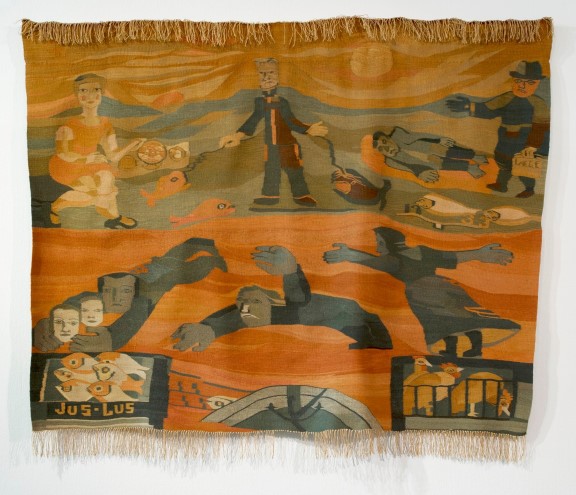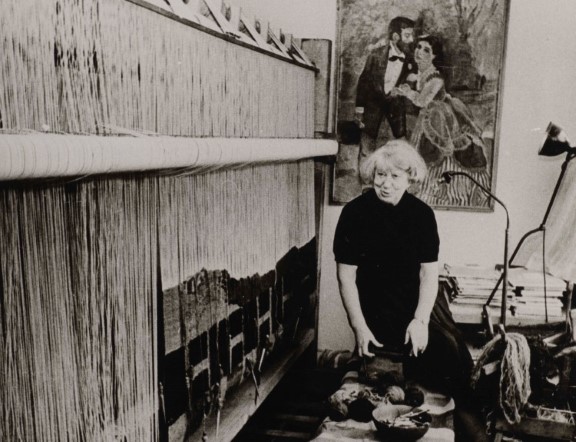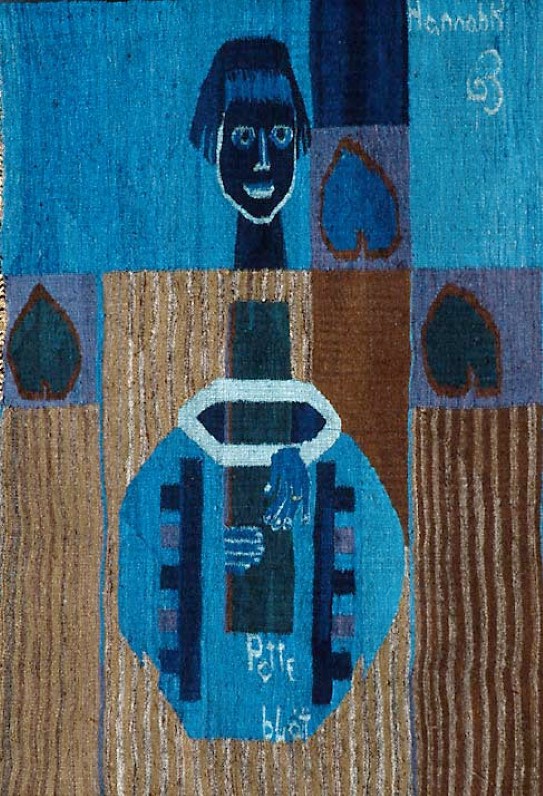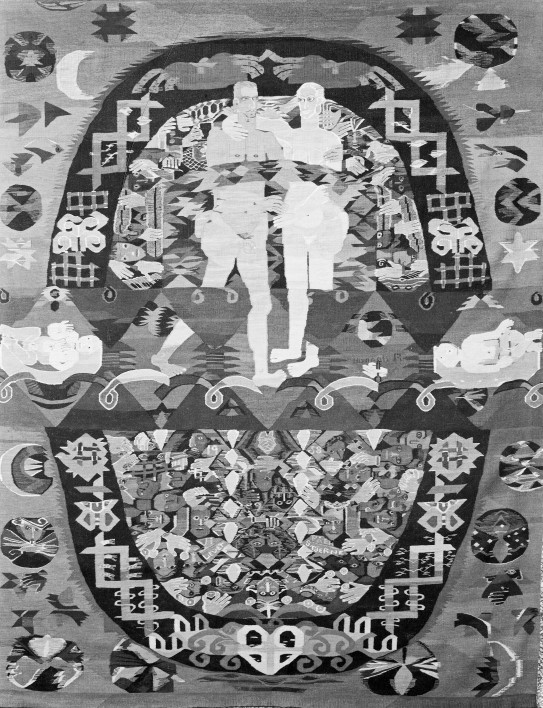
Hannah Ryggen
- Born 21 March 1894 in Malmö, Sweden.
- One of the leading textile artists in Norway.
- The National Museum has 17 of her works in its collection.
- Died 2 February 1970 in Trondheim.


Pot blue
Ryggen was self-taught in weaving technique and choice of materials. She often took control of the entire artistic process: carding, spinning and dying the yarn herself. With wool coloured with plant dyes, and with current political themes, she helped elevate tapestries from a handicraft to fine art.
Pot blue, also known as "pee blue", became the main colour of her tapestries and stood for the positive aspects of life, longing and dreams. Her love for this colour is reflected in, among other things, the self-portrait Pot Blue.
She used urine to create the beautiful blue colour in the yarn, so the "pee bucket" always stood ready for her guests.

Eternal activist
In 1958, Ryggen was commissioned to create a work for Erling Viksjø's new government building, H-block (Høyblokka) in Oslo. The result was the large-scale tapestry We live on a star. The naked couple and children symbolise life's eternal renewal.
Just over 50 years after the tapestry was unveiled in H-block, it became relevant once again when Norway was subjected to a terrorist attack by a Norwegian with fascist and Nazi ideology, ideas against which Ryggen fought in her artistic work.
Ryggen was a rebel and a peace activist her entire life. Even after her death, her works continue to inspire us to stand together and fight injustice, abuse of power and human humiliation. You can experience several of Ryggen's artworks in the collection exhibition at the National Museum.